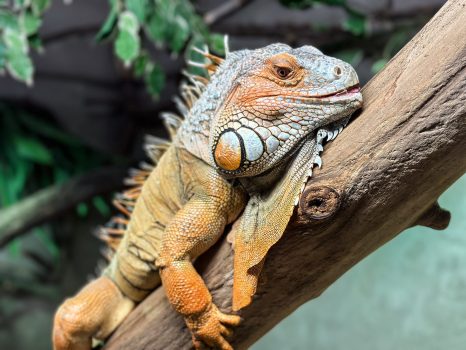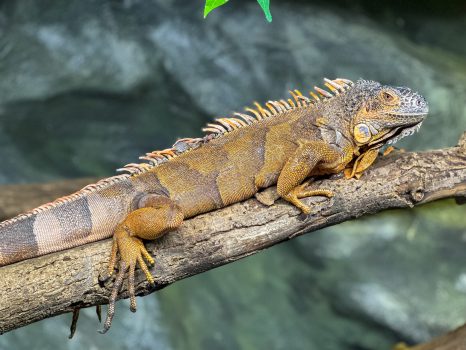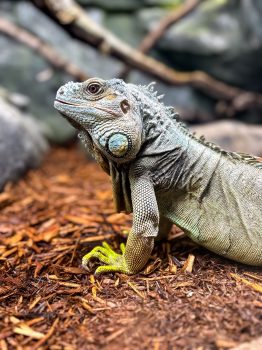Green Iguana
Common Name: Green Iguana
Scientific Name: Iguana iguana
Names: N/A
Locations: N/A



Diet
Green Iguanas are primarily herbivorous, feeding on a diet consisting mainly of leaves, flowers, fruits, and other plant matter. However, they may also occasionally consume insects and small vertebrates.
Average lifespan
In the wild, Green Iguanas typically live around 10 to 15 years, though they may live longer in captivity with proper care and diet.
Size
Green Iguanas are large lizards, with adults reaching lengths of up to 1.2 to 1.7 meters (4 to 6 feet) from snout to tail.
Weight
Adult Green Iguanas can weigh anywhere from 4.5 to 6.8 kilograms (10 to 15 pounds), with males generally being larger and heavier than females.
About
Green Iguanas are native to Central and South America, ranging from Mexico down to Brazil and the Caribbean islands. They inhabit various habitats including tropical forests, savannas, and coastal areas, where they can find suitable food and basking sites.
Size and behavior
Green Iguanas have a distinctive crest of spines along their back and a long, whip-like tail. They are arboreal, meaning they spend much of their time in trees, where they can bask in the sun and forage for food. Green Iguanas are also excellent swimmers and may dive into water to escape predators or cool off on hot days. They are typically diurnal, being most active during the day.
Diet and nutrition
Green Iguanas are strict herbivores, requiring a diet high in fiber and calcium. In captivity, they should be fed a variety of fresh fruits, vegetables, and leafy greens such as kale, collard greens, and mustard greens. It’s important to provide a balanced diet to prevent nutritional deficiencies and health issues.
Conservation status
The conservation status of Green Iguanas is currently of least concern. While they may face threats from habitat loss, hunting, and illegal pet trade in some areas, they are still relatively abundant and widespread throughout their range. However, like many reptile species, they may be impacted by habitat destruction, climate change, and human activities.
Fun fact
Iguanas have a unique ability to change color depending on their mood, temperature, and environment. When they are stressed or frightened, they may darken their coloration to blend into their surroundings or appear more intimidating to potential predators. Additionally, male Green Iguanas develop large dewlaps under their chin during the breeding season, which they use to attract females and establish dominance over other males.
Call or visit your local Reptilia Facility to learn how you can adopt one of these amazing reptiles.










